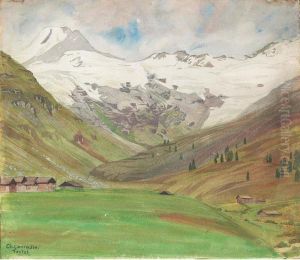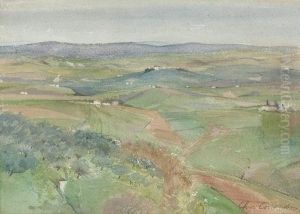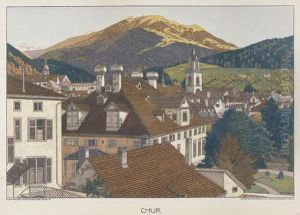Christian Friedrich Conradin Paintings
Christian Friedrich Conradin was a Swiss painter and lithographer born on July 26, 1787, in Chur, Switzerland. Although not as widely known as some of his contemporaries, Conradin made significant contributions to Swiss art, particularly in the field of lithography during the early 19th century.
Conradin's artistic journey began under the tutelage of his father, who was a painter himself. This early exposure to art nurtured his talents, which he further developed by studying at the Academy of Fine Arts Vienna. His time in Vienna was formative; he honed his skills and absorbed the influence of the vibrant Austrian art scene.
Upon completing his studies, Conradin returned to Switzerland, where he worked on a variety of projects, including portrait painting and printmaking. He was particularly drawn to the emerging technique of lithography, a method of printing originally based on the immiscibility of oil and water, which allowed for the mass production of images. Conradin became one of the early adopters and practitioners of this technique in Switzerland.
Throughout his career, Conradin created a number of lithographic prints that depicted landscapes, historical scenes, and portraits. His work is characterized by its attention to detail and its attempt to capture the essence of Swiss identity and the country’s picturesque landscapes. Moreover, Conradin's portraits are notable for their expressive detail and the skillful rendering of his subjects' personalities.
Apart from his work as an artist, Conradin was also involved in teaching, passing on his skills to a new generation of artists. His influence extended through his pupils and through the popularity of his prints, which contributed to the dissemination of lithographic techniques throughout Switzerland.
Christian Friedrich Conradin passed away on February 15, 1858, in Chur. His legacy is preserved in various Swiss museums and collections that hold his works. Although he may not be a household name, his contributions to the medium of lithography and Swiss art during the 19th century remain significant.




